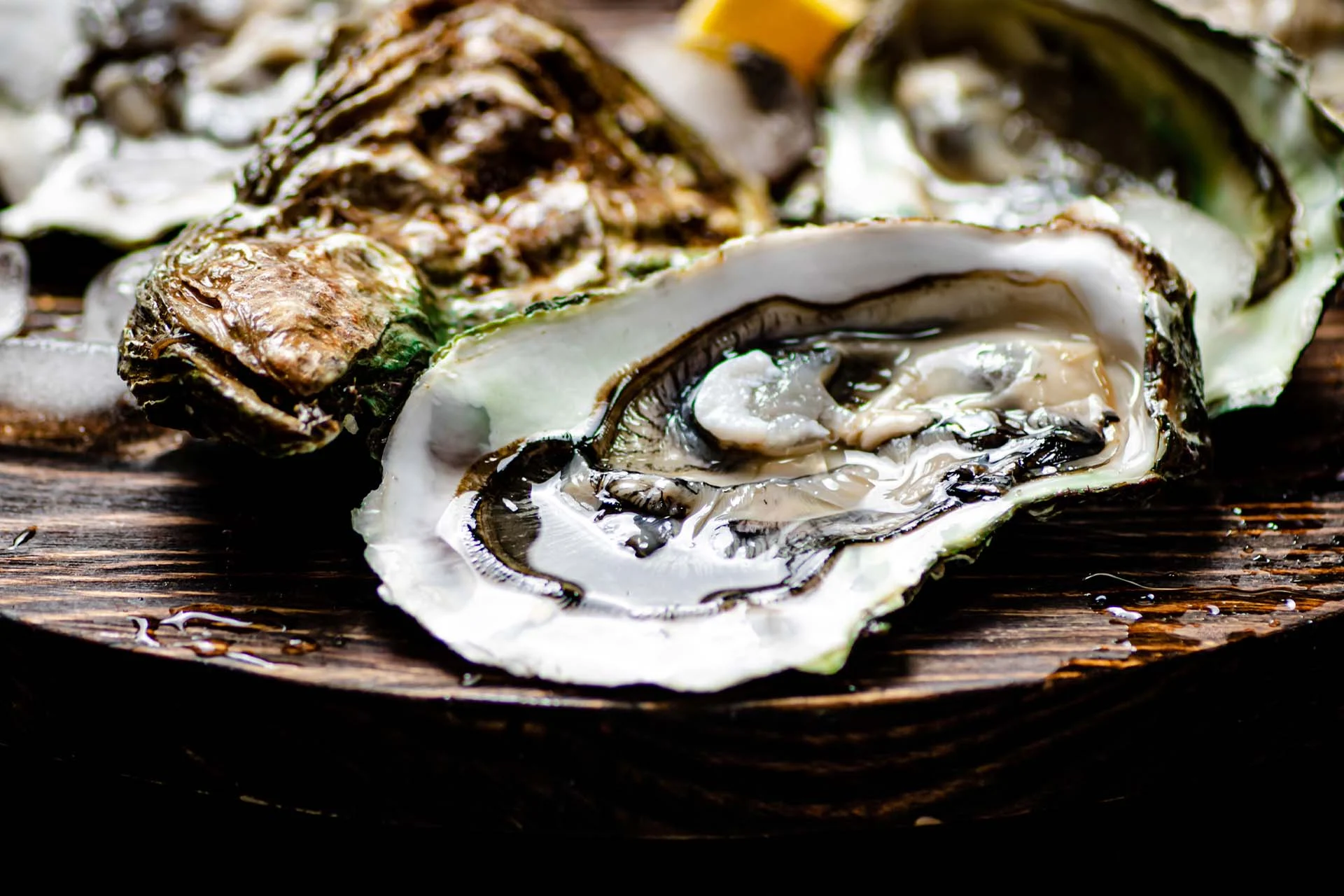Could a simple plate of mussels or clams hold the key to better health and a cleaner ocean? Meet the everyday seafood choice that checks all the right boxes: bivalves. Oysters, clams, scallops, and mussels provide top-level nutrition while demanding few resources from the environment. Around 90% of them are farmed, which helps ease pressure on wild fish stocks, and they also serve as natural filters that support cleaner water. Whether you’re into the salty slide of a fresh oyster or the hearty bite of a scallop, these shellfish are turning heads in the search for planet-friendly protein.
Yet this isn’t just about food trends or glossy menu photos. For people worried about mercury in big fish, or about the damage done by overfishing, bivalves stand out as a low-toxin, high-reward option. Across the globe, seafood experts and health researchers are pointing to shellfish as an unsung hero for both human diets and marine ecosystems. Below, we’ll meet some of the folks behind these discoveries, consider the bigger picture of aquaculture, and see how small actions—like adding mussels to your next dinner—could spark meaningful improvements for you and for future generations.
The Quiet Superstars of the Sea
Step into many coastal communities and you’ll spot shellfish farmers and fishmongers with stories to share. From New England to Southeast Asia, bivalves form a staple that people depend on—often to make a living, but also to bring color and flavor to the table. Dr. Christopher Golden, an associate professor of nutrition and planetary health at Harvard T.H. Chan School of Public Health, puts mussels at the top of the list for nutritional richness, followed by oysters, clams, and scallops. A single serving of mussels gives you all the vitamin B12 you need for an entire day, plus a strong dose of omega-3 fatty acids, zinc, and iron.

Mussels, like other bivalves, exist near the bottom of the food chain. They don’t accumulate contaminants the way larger predatory fish do. Since they’re filter feeders with short lifespans, harmful substances like mercury don’t have time to build up. A person who’s cautious about toxins in seafood can relax a bit when ordering a plate of steamed mussels or raw oysters. According to Dr. Golden, that’s a key reason why bivalves deserve the spotlight.
Of course, concerns remain about raw shellfish: certain bacteria or occasional pollution events—like sewage leaks or harmful algal blooms—can affect them. But experts say these events are monitored closely in the United States. Dr. Konstantine Rountos, a marine ecologist at St. Joseph’s University in New York, mentions that Eastern oysters are picky eaters that often expel harmful debris, including microplastics. This doesn’t mean they’re risk-free, but as Dr. Rountos points out, “strong regulations and good water quality policies keep trouble at bay, so long as producers and regulators do their jobs.”
A Win for the Environment
Beyond their influence on personal health, bivalves often star in conversations on eco-friendly eating. Dr. Golden calls them “the most sustainably produced type of seafood,” and for good reason. About 90% of the bivalves sold—whether oysters, mussels, or clams—are farmed, which means less reliance on wild populations that can be overfished. Also, shellfish need no feed besides the natural nutrients in the water. They filter out particles, help maintain healthier water systems, and can even lock carbon away in their shells.
Luke Gardner, an aquaculture specialist with California Sea Grant, highlights how shellfish farmers become guardians of the environment. If water quality dips, shellfish suffer, so farmers stand at the forefront of local conservation efforts. “You can’t raise good oysters in polluted water,” says Dr. Gardner. “Oyster farmers are environmentalists—both in their hearts and for business reasons.” This synergy between commerce and conservation is a powerful example of how the food system can be redesigned to serve human needs and the planet at the same time.

Even on a global scale, aquaculture is expanding rapidly. Over the past two decades, worldwide production of farmed fish, shellfish, and seaweed has skyrocketed, now meeting a major part of global seafood demand. While it might bring up images of crowded fish pens or polluted runoff, aquaculture done responsibly can be a good solution: it uses fewer resources than other forms of animal protein, and in many cases, far less land or freshwater.
Governments, research institutions, and nonprofits are working together to make aquaculture more sustainable. A 20-year review by some of the world’s top fisheries experts concluded that well-managed aquaculture systems hold real promise for feeding a growing population. They keep greenhouse gas emissions lower than beef or lamb, and often outdo poultry in environmental performance. The challenge is making sure that expansions in aquaculture don’t lead to overuse of antibiotics or cause habitat destruction in coastal zones. The next big step is balancing growth with strong policies that safeguard local ecosystems.
Shellfish in a Wider Food Context
People who want to cut down on red meat while still getting high-quality protein may find a solid alternative in shellfish. Some worry that fishy smells or premium price tags put them out of reach, but fresh seafood shouldn’t have an odor beyond a mild brine, and many shellfish types can be budget-friendly if sourced locally or purchased when in season. Shellfish also come in shelf-stable forms like canned or jarred clams. While these might have slightly lower levels of certain nutrients, they remain a decent protein source.
There’s also the question of overfishing in other parts of the marine supply chain. A Food and Agriculture Organization assessment shows that around two-thirds of the world’s wild fish stocks are now at biologically sustainable levels, compared to 90% back in 1974. That’s a worrying trend. Luckily, shellfish aquaculture isn’t part of that crisis. By focusing on filter-feeding species that thrive without human-made feed, farmers can avoid draining other parts of the marine system. Still, it’s wise to learn where your shellfish come from, just as you might look for a fair-trade label on coffee or chocolate.
The global movement toward more ocean-friendly diets is about more than just food. There are social and economic factors as well. Many small-scale farmers in low-income nations rely on aquaculture to boost household earnings. As one industry grows, it can bring jobs and resources to places that need them. But the same expansion raises questions about fair distribution, local culture, and safety regulations. Striking a balance between short-term gains and long-term sustainability requires good governance, honest collaboration, and an educated public.

Tip Sheet for Picking the Best Bivalves
- Source Wisely: Check labels for farm origin, or ask your fishmonger about the location. U.S.-sourced shellfish follow strict standards.
- Check Freshness: Shells should be closed. If one is slightly open, give it a gentle tap—if it doesn’t snap shut, pass it by. It should also smell like the sea, never rotten.
- Store Correctly: Keep them cold. Don’t seal them in airtight plastic since they need to breathe. A tray covered with a damp towel in the fridge usually works.
- Prep Smart: Rinse shellfish under cold water, discarding any with cracked shells. If you see a beard on mussels (the fibrous strands), pull it away or snip with scissors.
- Watch for Deals: Canned clams or smoked oysters can be cost-effective options. If you choose them, pay attention to the label or brand origin to ensure traceable sources.
Cooking Up a Storm
Feeling inspired? The good news is bivalves are easy to prepare. A quick steam with herbs, a squeeze of lemon, and maybe some olive oil is all you need for a tasty meal. For a more filling dish, try a classic linguine with clams, or toss sautéed scallops on a bed of pasta or veggie noodles. You can also fold canned clams into a hearty chowder or arrange raw oysters with a dash of hot sauce for a briny punch.
Dr. Rountos loves hard clams “casino-style,” topped with bread crumbs and bits of cured meat, then baked until golden. Meanwhile, Dr. Gardner and Dr. Golden lean toward simpler cooking that lets the natural flavors sing. “Steam them, roast them, or grill them,” Dr. Gardner suggests. “Just don’t overcook. Rubber-band scallops won’t impress anyone!”

And for those new to raw oysters, Dr. Gardner has one simple trick: “Tilt your head back and gulp it in—no time to overthink it!” Over time, you might graduate to savoring the different varieties grown in different waters, noticing subtle flavor shifts from region to region.
Aquaculture and the Broader Food System
Aquaculture’s story doesn’t end with shellfish. Across Asia, Africa, and South America, freshwater fish farming has seen dramatic growth, aiming to offset the decline in certain wild fish stocks. Tilapia, carp, and catfish often top the charts in quantity. There have been big gains in feed technology that reduce the amount of wild fish needed as feed, although the shift to more plant-based feeds brings its own trade-offs. It uses farmland resources and demands caution about toxins or antinutrients in plant proteins.
Meanwhile, advanced solutions are in the works: single-cell proteins from algae, insect-based feeds, and better breeding programs. The idea is to refine aquaculture so that it provides maximum nutrition with minimal environmental cost. Molluscs and seaweeds stand out for offering so-called “ecosystem services.” They don’t rely on external feeds and can improve water quality by absorbing or filtering out excess nutrients. Experts say we should harness that potential to address not only hunger but broader environmental concerns.
It’s not always smooth sailing. There are looming worries: parasites and pathogens can spread through cramped fish or shellfish farms; ocean acidification might threaten the shells of bivalves; and if regulations are weak, irresponsible operators might damage local habitats. But overall, aquaculture has shown it can adopt better practices and often do so faster than skeptics guessed.
Community Efforts for Clean Water and Good Food
When you purchase shellfish from local farmers, you help reinforce a cycle of environmental care. Those farmers need pristine water to keep their shellfish healthy, so they often become watchdogs for pollution or harmful runoffs. Grassroots groups around the world have formed to address waterway problems, from industrial wastes to plastic debris. By linking aquaculture interests with citizen-led beach cleanups and government oversight, entire communities stand to gain.
In some coastal towns, these efforts have led to real improvements in water transparency, oxygen levels, and biodiversity, which in turn allows for more bivalve production. Similar stories exist in inland areas that have discovered the benefits of freshwater shellfish aquaculture, feeding local populations and replenishing aquatic ecosystems. The more that everyday people understand the chain of cause and effect, the closer we come to forging real solutions: healthy, sustainable food that supports local economies without wrecking the environment.

Why Shellfish Might Be Your Next Go-To Protein
- Nutrient Density: A small portion offers a high concentration of essential vitamins and minerals.
- Lower Toxin Worries: Unlike large predator fish that accumulate mercury, bivalves tend to stay clean.
- Eco-Friendly: They require no added feed, filter the water, and often reduce carbon in the process.
- Flavor Versatility: From chowders and pastas to raw bars and grilled delights, there are recipes for every taste.
- Local Advocacy: Shellfish farmers need healthy water, giving them reason to push for cleaner coastal areas.
This list is a roadmap for people aiming to reduce red meat while still getting first-rate protein. It’s also a path for communities struggling with water pollution to rally behind a product that thrives on cleanliness. By supporting local bivalve farms, you indirectly support the push for better coastal or freshwater management.
A Shared Future of Ocean Stewardship
As global demand for seafood grows, we’ll likely see more aquaculture. This can be good news, provided we address potential downsides with strong rules and strong science. Stories of children in Southeast Asia eating clams from community-managed mudflats, or families in Maine feasting on local mussels, show how culture, commerce, and health can combine into a thriving pattern.
Nutrition experts highlight the diverse range of aquatic foods, from small fish to algae, that can fill gaps in vitamins and essential fatty acids around the world. Millions face hidden hunger: micronutrient shortages that hamper growth and contribute to chronic disease. Shellfish and other aquatic foods—when farmed in ways that respect local habitats—bring a new toolbox for tackling these issues.
Yes, the path forward has hurdles. Worsening water pollution, antibiotic misuse in aquaculture, and the unpredictability of climate shifts can complicate matters. But we have reason for hope. The aquaculture sector has already made strides in cutting reliance on wild fish for feed, trimming greenhouse gas emissions, and innovating new ways to farm responsibly. These gains align with the fact that bivalves, seaweed, and carefully raised finfish produce lower emissions than beef or lamb, and often compare favorably to poultry.
Making a Simple Switch
The next time you visit the grocery store or dine out, consider giving shellfish a try. Ask about local mussels or sustainable oyster farms. Chat with fishmongers or farmers’ market vendors who take pride in their stewardship. Or swap out shrimp for scallops in a favorite recipe. You might discover that small changes can spark big results for your health—and for the seas that so many creatures call home.
Perhaps the real takeaway is that we have more influence in shaping our plates than we might realize. And in the process, we can support a future where healthy food and a healthy planet go hand in hand.

Shellfish allergies also exist. About three percent of adults are affected, and it’s worth knowing that bivalves contain similar allergens to those in shrimp or lobster, even though they aren’t closely related. The important message: If you or a loved one is prone to reactions, always check in with a medical professional before adding shellfish to your diet.





Aquaculture shows what climate-smart food can look like.
😎
All this talk about regenerative agriculture. Shellfish do it underwater. 😛
We need more food systems that work with nature, not against it.
Amazing how something simple can have such impact.
Filter feeders feeding the future. Let that sink in.
Less guilt, more garlic butter.
Saving the ocean one slurp at a time.
Love oysters 🦪
Eat an oyster, save the coast.
Eat more 🦐🦐🦐 💋
What we eat matters